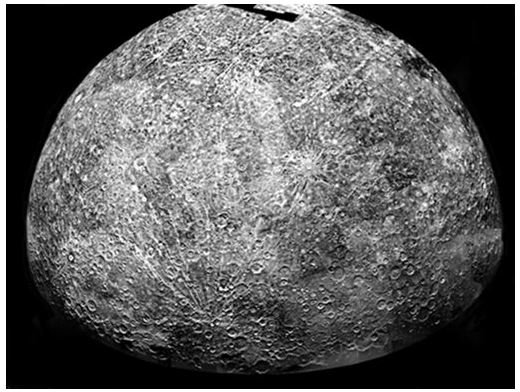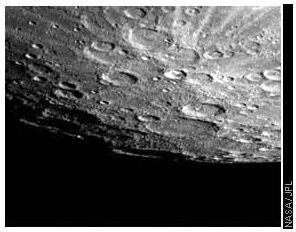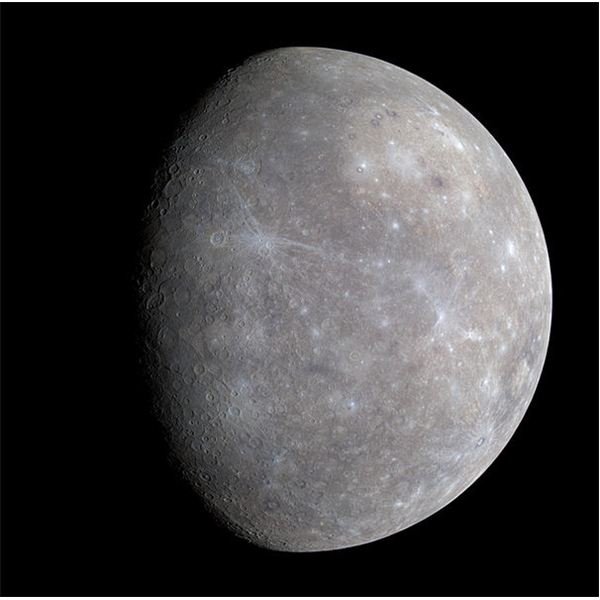Facts About Mercury, the Closest Planet to the Sun
Fun Facts on Planet Mercury
- Position in the Solar System: Closest planet to the sun.
-
Closest Distance to the Sun: Perihelion: 46.0 million km or 28.6 million miles
-
Furthest Distance From the Sun: Aphelion: 69.8 million km or 43.4 million miles
-
Minimum Distance to Earth: 77.3 million km or 48 million miles
-
Mercurian Day: 176 Earth days
-
Mercurian Year: 87.97 Earth days
-
Axis Tilt: 0 degrees
-
Orbital Inclination to Ecliptic: 7 degrees
-
Orbital Eccentricity: 0.206
-
Diameter: 4,878 km or 3,030 miles
-
Mass: 3.3022 x 10 kg, smallest in the solar system since Pluto became a dwarf planet
-
Gravity: 3.7 (Earth = 1)
-
Escape Velocity: 15,300 km/h or 9,500 mph
-
Temperature Range: -173C to 427C or -279F to 801F
-
Mean Surface Pressure: .001 picobars
-
Atmospheric Composition: 42% oxygen, 29% sodium, 22% hydrogen, 6% helium, .5% potassium, and trace amounts of argon, carbon dioxide, water, nitrogen, xenon, krypton, and neon.
-
Number of Moons: 0
-
Ringed System?: no
-
Magnetic Field? : yes
Fun Facts on the Planet Mercury!
-
The Mercurian year is much shorter than an Earth year, lasting only 87.97 Earth days. A Mercurian day, though, is much longer than an Earth day, lasting 58.65 Earth days. Mercury revolves around the Sun quicker than any other planet, allowing it to complete a year in record time by working its way past all of the zodiac constellations just like Earth does. However, Mercury spins very slowly in a circle on its axis, which requires it to take two trips around the Sun, or two Mercurian years, before all parts of planet will see the sun and have a sunrise and sunset.
-
Even though Mercury is closest to the sun of the inner planets in the solar system, it does not have the highest surface temperatures. Because it has a very thin, almost absent atmosphere, it gets very hot in the day and very cold at night, making it the planet with the greatest temperature variance. The temperature on the surface of Mercury can vary from -279-degrees F during the night to 801-degrees F during the day. These varying temperatures and thin atmosphere make it possible for Mercury to have ice in its craters.
-
Mercury has no moons because it orbits too close to the Sun. If Mercury had a moon the Sun would suck it away in an instant.
-
The craters on Mercury are more defined than on other planets because there are no atmospheric conditions to weather away at them. The absence of water and wind ensure that none of the craters get filed down or smoothed out, filling Mercury full of observable craters and holes seen most recently by the Messenger mission from NASA.
Mercury’s Surface


References
NASA, https://solarsystem.nasa.gov/planets/profile.cfm?Object=Mercury&Display=Facts
University Corporation for Atmospheric Research, https://www.windows.ucar.edu/tour/link=/our_solar_system/planets_table.html
National Space Science Data Center, https://nssdc.gsfc.nasa.gov/planetary/factsheet/mercuryfact.html
NASA, https://www.nasa.gov/worldbook/mercury_worldbook.html
Hermograph, https://www.hermograph.com/science/mercury1.htm
